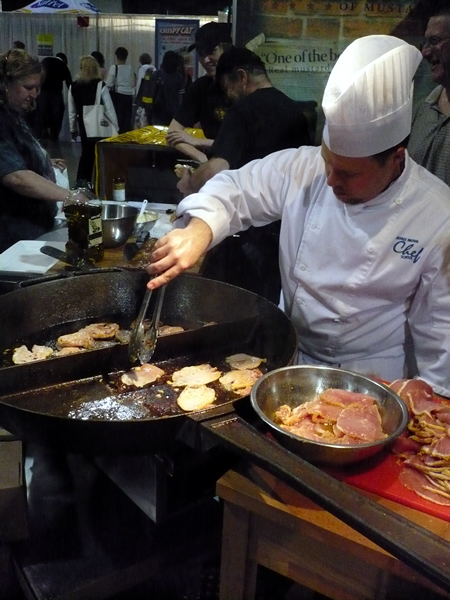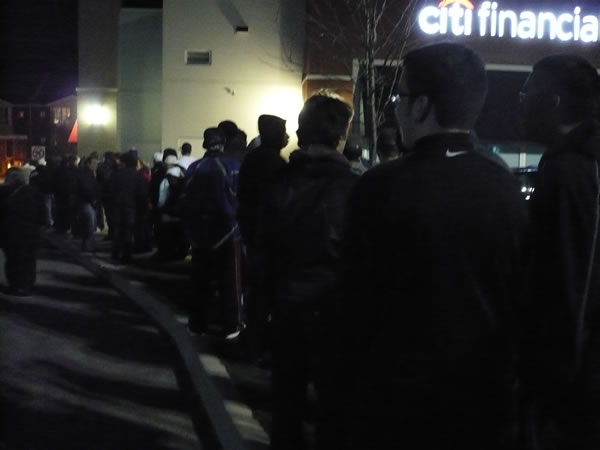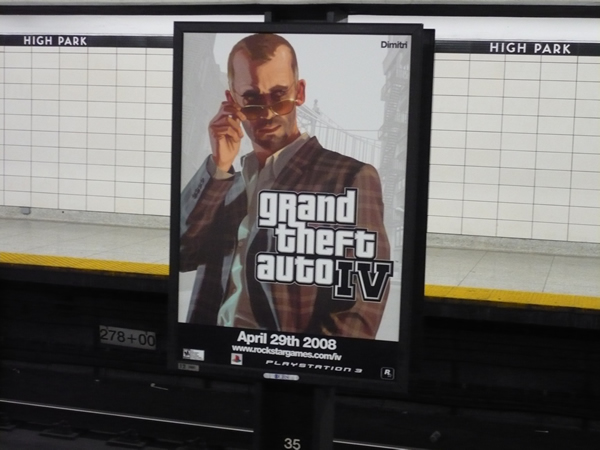Last night, the Ginger Ninja and I attended Cory Doctorow’s reading of his new novel, Little Brother at the Merrill Collection (the collection of sci-fi books located in the upper floor of the library on College Street just east of Spadina). Little Brother is Cory’s first foray into writing a “young adult” book (memo to my friend Stacy Dillon: read this book!).
Here’s the publisher’s summary of Little Brother:
Marcus, a.k.a “w1n5t0n,” is only seventeen years old, but he figures he already knows how the system works–and how to work the system. Smart, fast, and wise to the ways of the networked world, he has no trouble outwitting his high school’s intrusive but clumsy surveillance systems.
But his whole world changes when he and his friends find themselves caught in the aftermath of a major terrorist attack on San Francisco. In the wrong place at the wrong time, Marcus and his crew are apprehended by the Department of Homeland Security and whisked away to a secret prison where they’re mercilessly interrogated for days.
When the DHS finally releases them, Marcus discovers that his city has become a police state where every citizen is treated like a potential terrorist. He knows that no one will believe his story, which leaves him only one option: to take down the DHS himself.
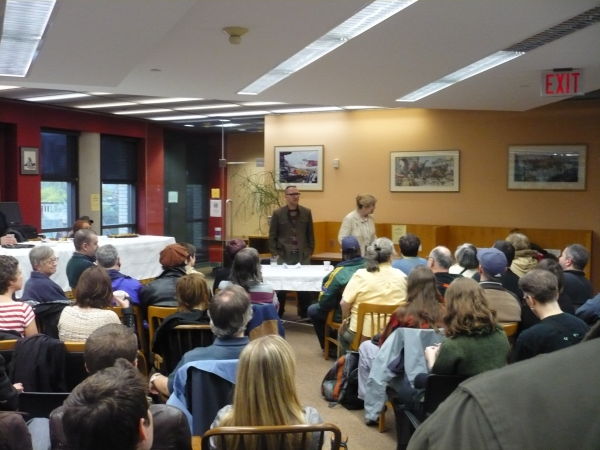
Cory being introduced to the crowd.
The room was packed to overflowing with Cory’s fans, largely a slice of Accordion City’s sizable nerd community, but a different branch from those you see at gatherings like DemoCamp. Cory’s family were also there: Alice and Poesy (who’s a very sweet, well-behaved baby) and the doting grandparents (whom I’ve mentally filed as the “Docto-‘rents”). I also saw some people I hadn’t seen in a good long while, including OpenCola alumni Chris Smith, Michael Skeet and Karl Schroeder, who writes sci-fi that’s harder than Chinese math.
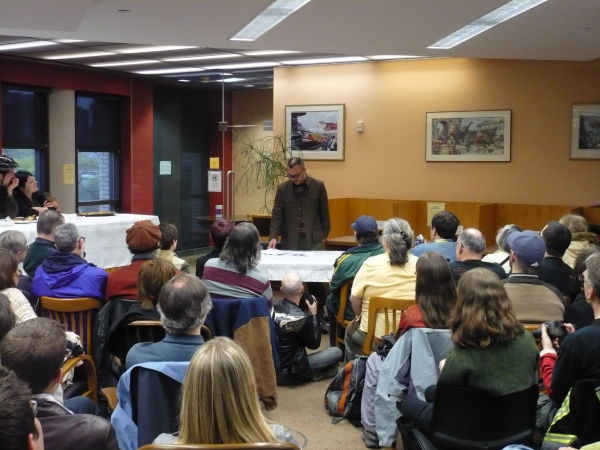
In order to let some latecomers straggle in and not miss the reading, Cory opened the session by taking a couple of questions from the audience.
One member of the audience asked Cory for his opinion of the proposal that the SFWA — that’s the Science Fiction and Fantasy Writers of America — open their membership to comic book and graphic novel writers. Apparently this has sparked some controversy among science fiction and fantasy writers, who don’t want their roster muddied by funny-pages people. In response to this, Cory said that he supported the SFWA opening their doors to comic book people, stating “If science fiction writers and comic book writers have nothing to say to each other, then someone should tell Neil Gaiman.”
Another person asked about Cory’s being a Canadian writing about the Department of Homeland Security, whose methods and approaches are basically an American problem. Cory answered that a number of Americans have taken up the same challenge, and that being a Canadian gives you a little distance from the situation, which in turn can give a better perspective. He used a couple of comparisons: first, how being a bit of an outsider in high school can give you a better view into the social machinery of the popular kids’ cliques (a feeling that I’m sure everyone in this crowd was familiar with), and second, “It’s like we’re Animal House and they’re Dean Wormer.”
“Would you consider Little Brother a sequel to 1984?” asked someone else in the audience, to which Cory replied, “Don’t think of it as a sequel to 1984, think of it as 1984 fan fiction.”
Cory read chapter 12 of Little Brother. A lot of his descriptions of San Francisco’s Mission district come directly from experience; when he and I worked together down there, we ate at a lot of the little Mexican restaurants that fit those he described in the book, right down to the description of brain burritos and our never quite getting up the gumption to order them, even after watching the dinner scene near the end of Hannibal. (And I could swear that he wrote the make-out session near the Mission church by following me and my then-girlfriend back in 2001.)
The chapter was good solid present-day cyperpunk, and in addition of bringing back memories of San Francisco, it also brought back memories of being young, going to concerts and ditching my alcohol and running from the cops after they busted a bush party. As a forty-year-old, I enjoyed this snippet of the story, and I’m sure that teenagers — whom Cory says read not only for pleasure but also to figure out the world — will get a lot out of it.
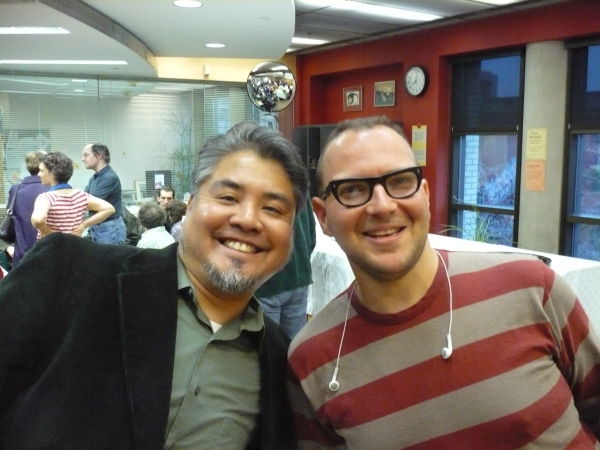
Posing with Cory after he signed my book.
It was good to see Cory and his family at the gathering — it’s a shame that he, Alice and Poesy live so far away! I’ll have to visit them in Merrie Olde Englande sometime soon.




